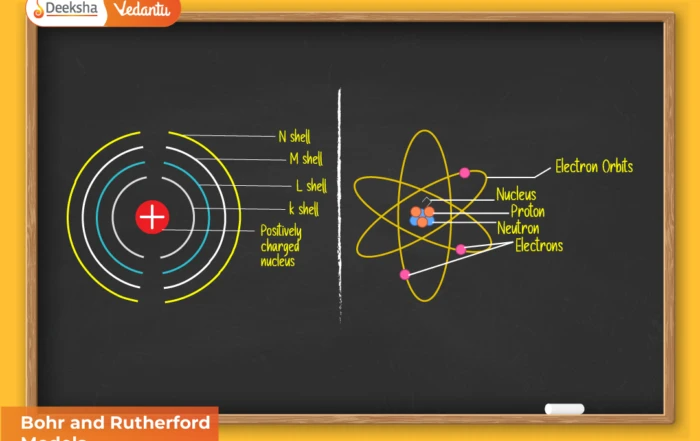
This chapter on Angles lays the groundwork for deeper exploration into Unit: Trigonometric Functions, where you’ll uncover trigonometric identities, transformations, and real-life applications essential for mastering JEE, NEET, and KCET.
Exam Marks Distribution
- JEE Main / Advanced: ~1 question (4 marks) covering angle conversions and arc calculations
- NEET (Physics): 3–4 marks indirectly from concepts like angular displacement and wave phase shifts
- KCET / COMEDK: 1–2 questions (2–4 marks) focusing on unit conversions and function behavior
Understanding angles deeply is essential for mastering advanced trigonometry, calculus, and physics-based problems that appear across engineering and medical entrance exams. This foundational topic plays a significant role in interpreting rotation, motion, and wave dynamics.
Concept of an Angle
An angle represents the amount of rotation a ray undergoes around its endpoint, termed the vertex. The ray’s starting position is called the initial side, and the position after rotation is the terminal side. When the ray rotates counterclockwise, the angle is positive; when it rotates clockwise, it is negative.
This fundamental concept allows us to describe and measure rotational motion in two dimensions. Beyond pure mathematics, it finds usage in physics (e.g., angular velocity), engineering (e.g., phase angles in circuits), architecture (design geometry), and even biology (muscle motion). Angles are the building blocks for defining trigonometric functions like sine, cosine, and tangent, which are used extensively in signal processing, electronics, and geometry.
Example: If a wheel rotates from its starting position to cover a quarter of a full circle, it covers an angle of 90°. If it rotates in the opposite direction, it’s -90°.
Degree Measure
This is the most familiar unit of angle measurement. One full rotation around a circle is 360 degrees (360°). Degrees can be further divided:
- 1 degree = 60 minutes (1° = 60′)
- 1 minute = 60 seconds (1′ = 60″)
Example: 45° 30′ = 45.5 degrees (since 30′ = 0.5°)
Degree measure is commonly used in geometry, geography (latitude/longitude), and everyday measurements involving angles. In JEE and KCET, problems may require quick conversions or identifying quadrant-based angle positions in degrees.
Radian Measure
A radian is the angle subtended at the center of a circle by an arc equal in length to the radius. It is a unitless quantity and is the standard angle unit in higher mathematics.
- 1 radian ≈ 57°16′44″
- A full circle =
radians
Important Identity:
radians
Example: Convert 120° to radians:
Radians are especially useful in calculus, where limits, derivatives, and integrals of trigonometric functions assume angles are in radians. They also appear in rotational physics, where angular displacement, velocity, and acceleration are calculated.
Relation Between Radian and Real Numbers
On a unit circle (radius = 1 unit), the radian measure directly corresponds to the length of the arc. Positive values move counterclockwise; negative values move clockwise.
This makes the radian a natural fit for calculus and wave mechanics. Angles in radians are treated just like real numbers, and this aids in interpreting periodic functions.
In coordinate geometry and trigonometric graphing, this link between radians and real numbers simplifies calculations and provides a smooth mapping between algebraic and geometric representations.
Relation Between Degree and Radian
Here’s how to convert between radians and degrees:
- Radians to Degrees: Multiply by
- Degrees to Radians: Multiply by
Conversion Table
| Degrees | Radians |
| 30° | |
| 45° | |
| 60° | |
| 90° | |
| 180° |
These conversions are essential for solving trigonometric identities, equations, and calculus problems. Questions on conversions are direct and quick-score in JEE and KCET.
Classification of Angles
| Type of Angle | Measure Range |
| Acute | |
| Right | |
| Obtuse | |
| Straight | |
| Reflex | |
| Complete Angle |
Knowing this classification helps solve angle-based geometry questions and determine the signs of trigonometric values in different quadrants.
Positive and Negative Angles
- Positive Angle: Measured counterclockwise from the initial side
- Negative Angle: Measured clockwise from the initial side
Example: An angle of – means a 90° rotation clockwise.
This concept is vital for working with trigonometric equations, rotational physics, and graphical analysis of periodic functions.
Trigonometric Function Signs by Quadrant (ASTC Rule)
| Quadrant | Positive Functions | Mnemonic |
| I | All (sin, cos, tan) | All |
| II | Sin, cosec | Students |
| III | Tan, cot | Take |
| IV | Cos, sec | Calculus |
Understanding quadrant signs is crucial for JEE problems on trigonometric identities, inverse trigonometric functions, and graph behavior.
Arc Length and Sector Area Using Radians
| Quantity | Formula | Example |
| Arc Length | ||
| Sector Area |
These formulas appear frequently in KCET, COMEDK, and JEE exams involving applications of circular motion and geometry.
Competitive Exam Relevance
- JEE Main: Frequently tests radian/degree conversions and quadrant-based identities.
- NEET: Concepts applied in wave motion, angular displacement, rotational mechanics.
- KCET / COMEDK: Typically 1–2 direct formula-based questions.
Practice Questions
- Convert 135° to radians.
- Calculate arc length where
cm and
.
- What is the degree equivalent of 5 radians?
- In which quadrant does an angle of 300° lie? What is the sign of
?
FAQs
Q1. Why are radians used in higher math?
They make calculus simpler, especially when differentiating and integrating trigonometric functions.
Q2. Can we use degrees in all physics problems?
Not always. Radians are the default in angular motion, wave functions, and rotational mechanics.
Q3. How do I quickly convert degrees to radians in exams?
Use  , then multiply with
, then multiply with  .
.
Q4. What is a real-world application of arc length?
Designing gears, wheels, and engineering arcs where circular motion is involved.
Q5. How do radians connect to real numbers?
Radians allow us to map angle measures onto a number line, essential for trigonometric graphs.
Conclusion
The chapter on Angles builds the mathematical foundation necessary for trigonometry, calculus, and rotational motion. Whether you’re tackling projectile motion in NEET or inverse trigonometric functions in JEE, mastering the radian and degree systems is vital. Learn to visualize angles on the unit circle, and practice real-world problems involving arc length and sector area. This topic is not just a stepping stone – it’s a gateway to excelling in competitive exams and understanding advanced science and engineering concepts.











Get Social